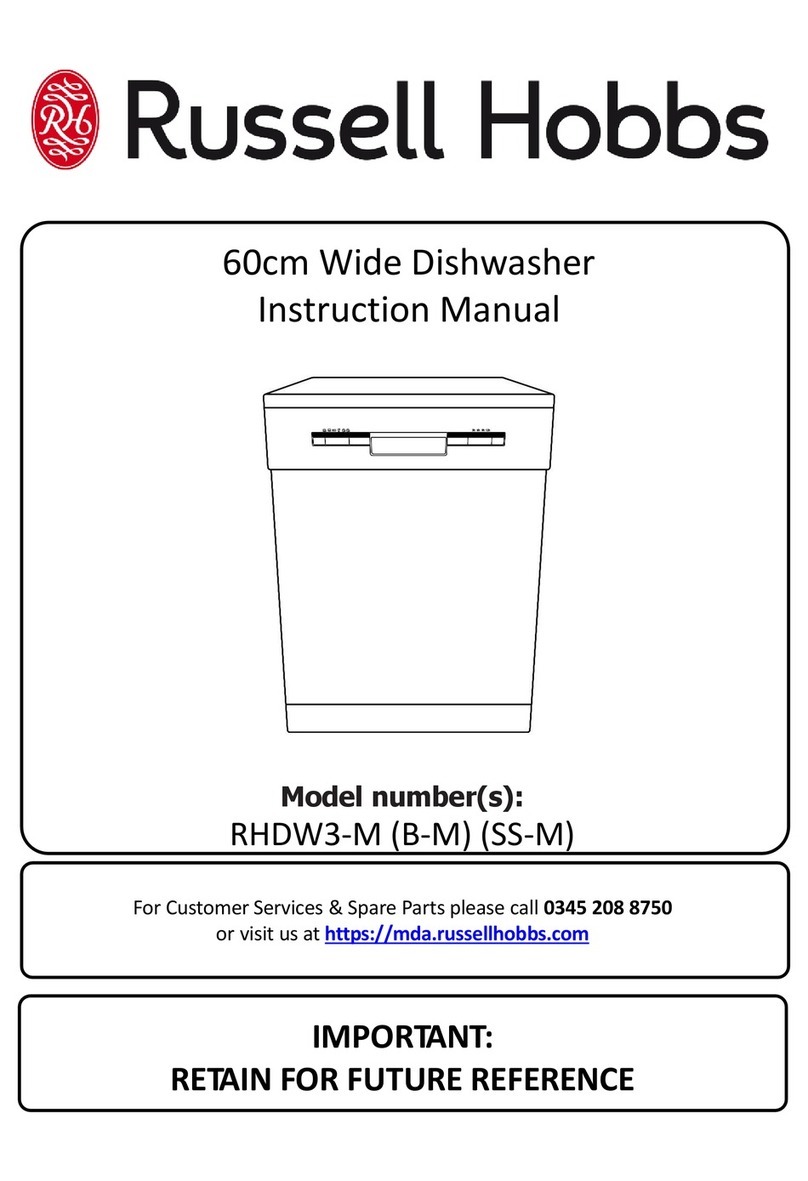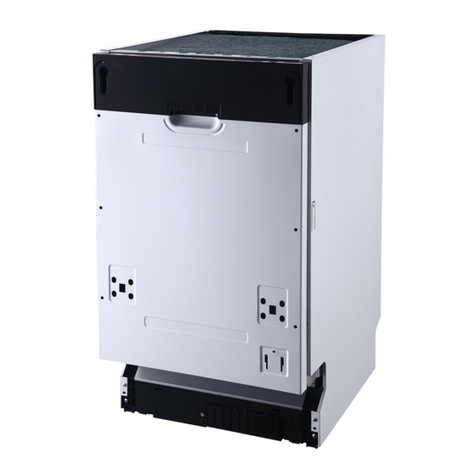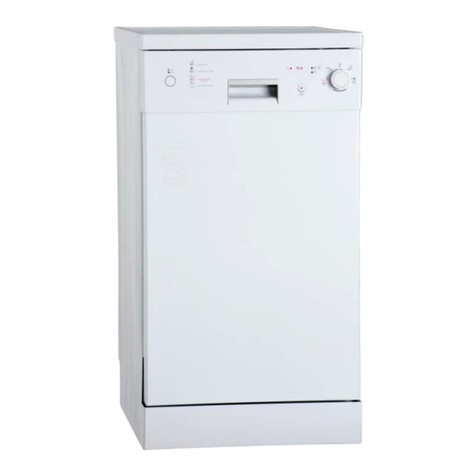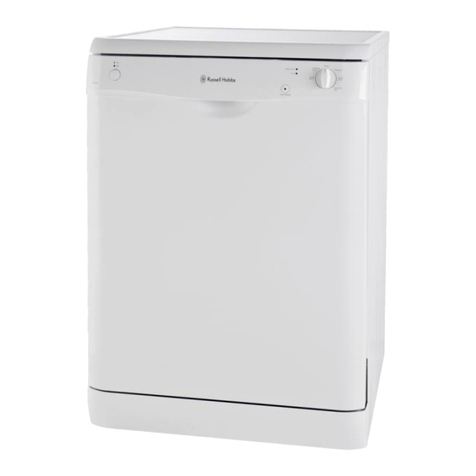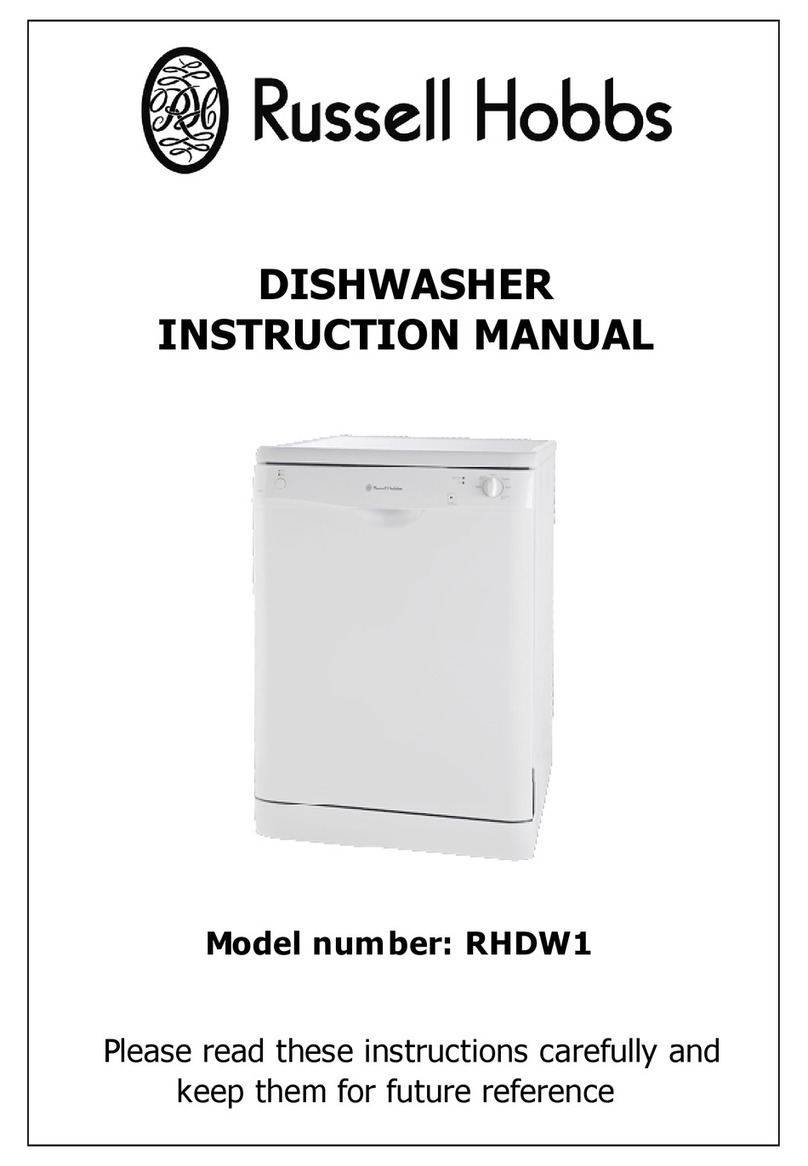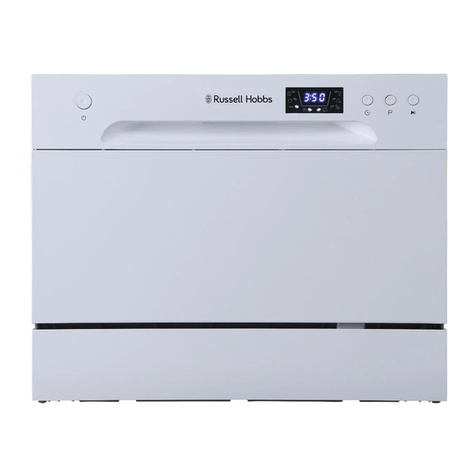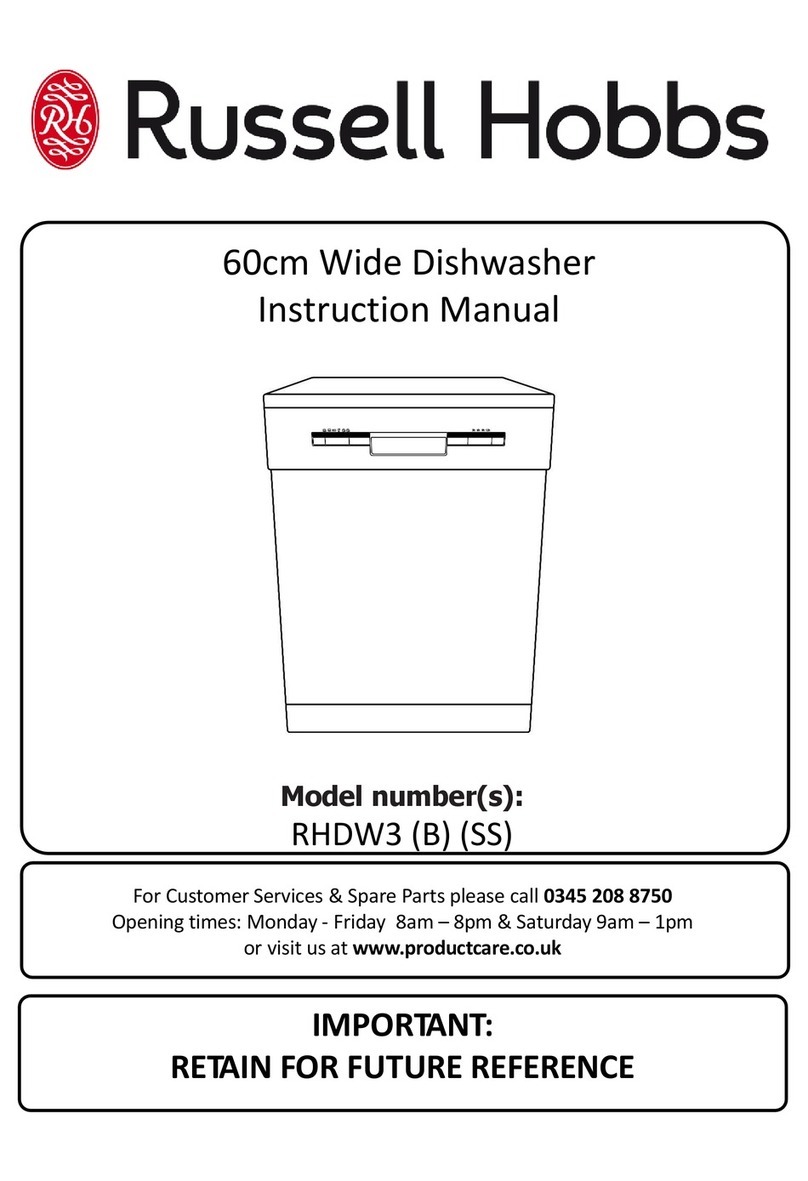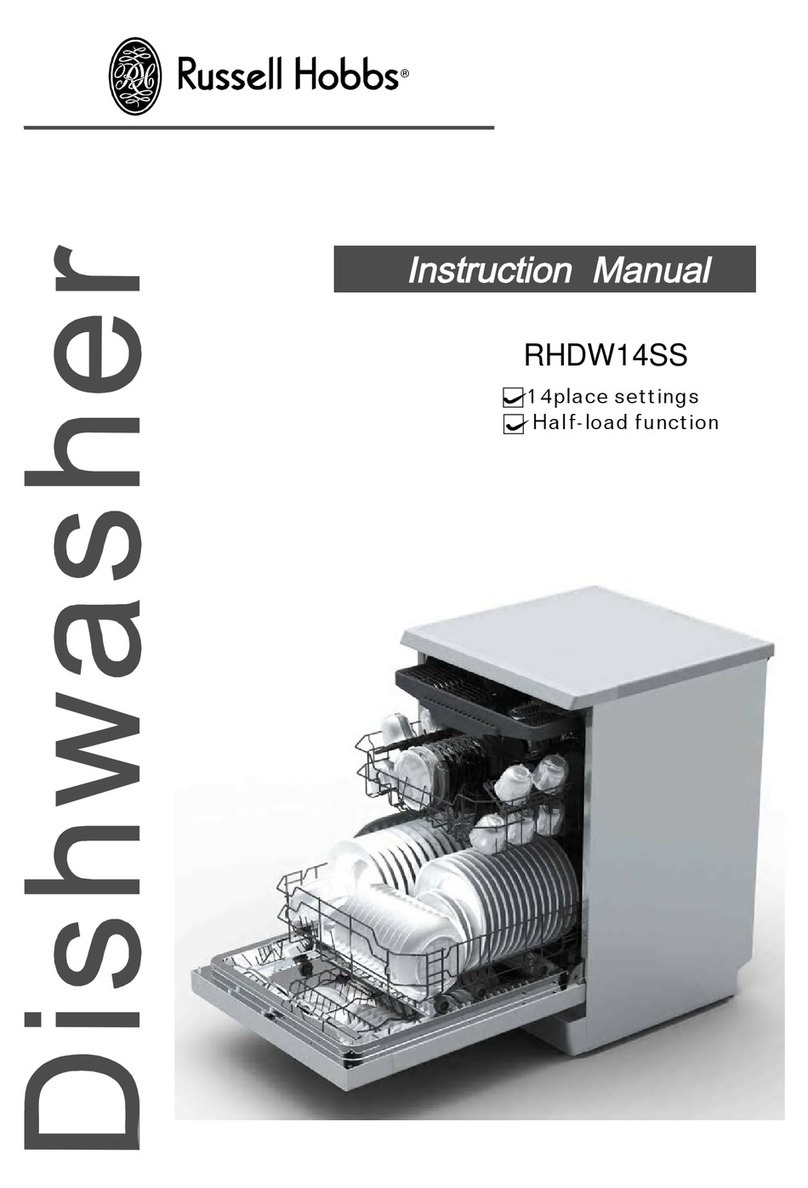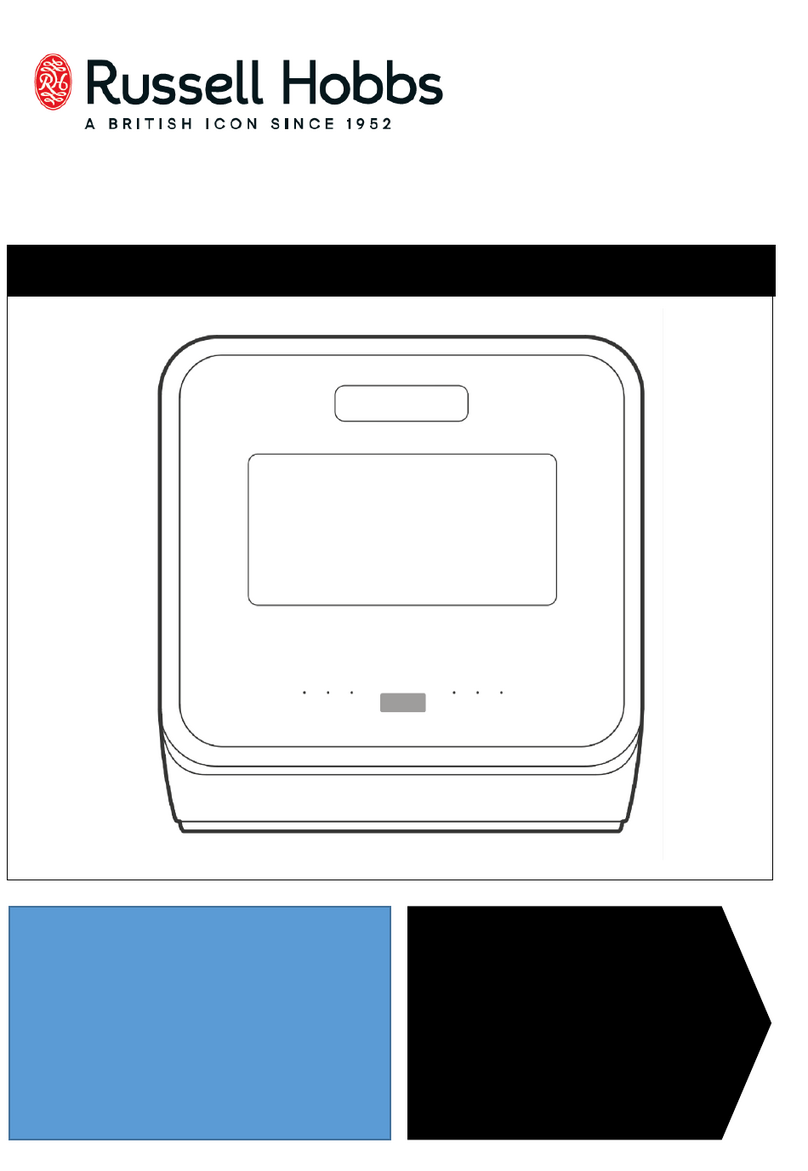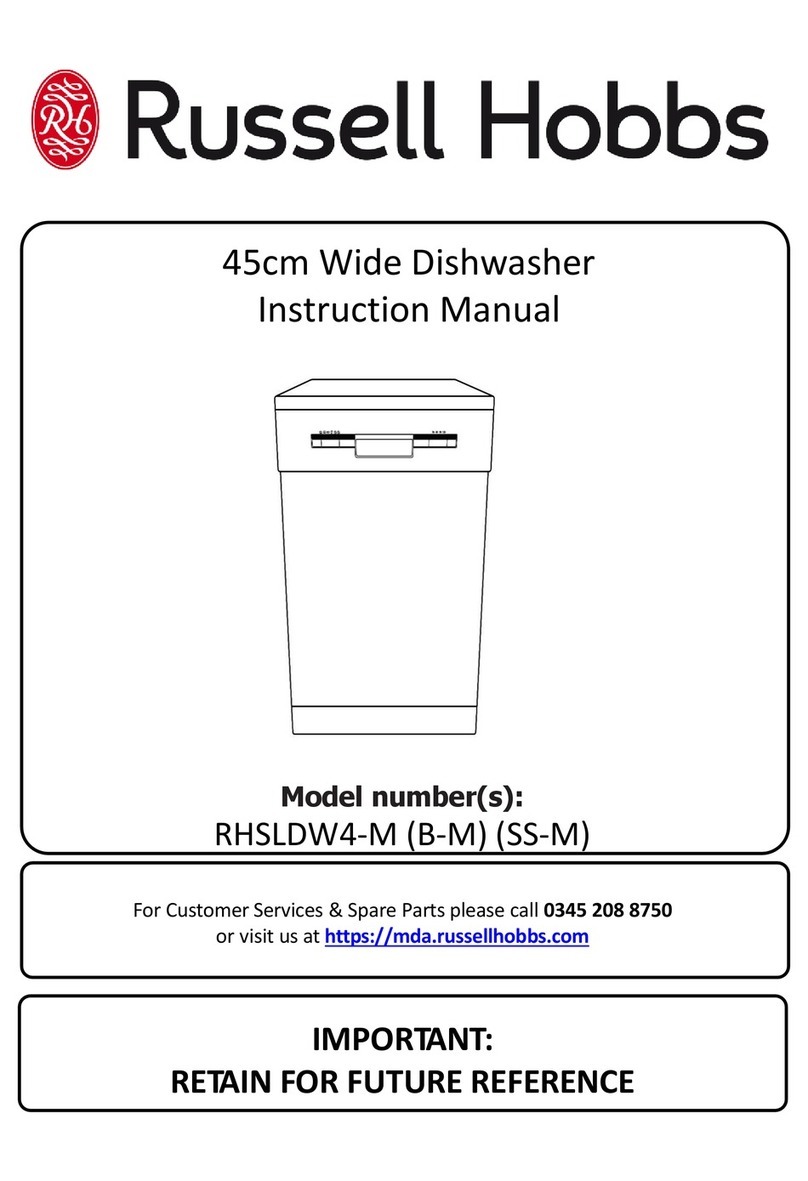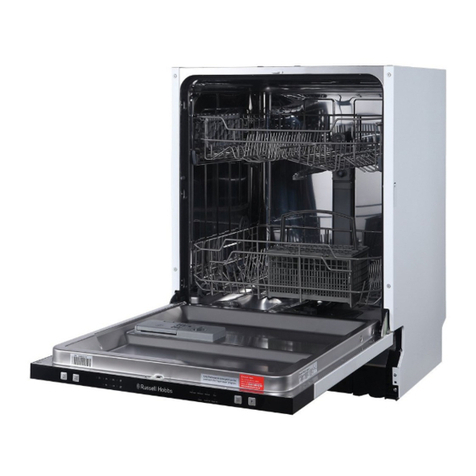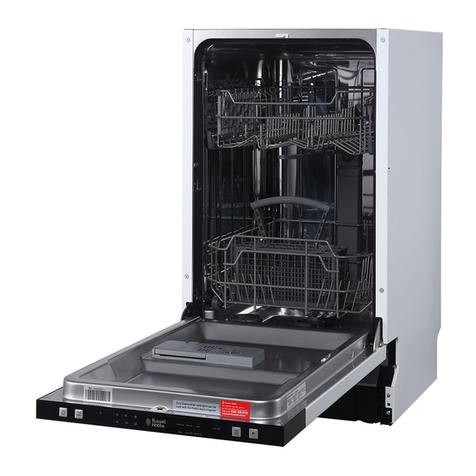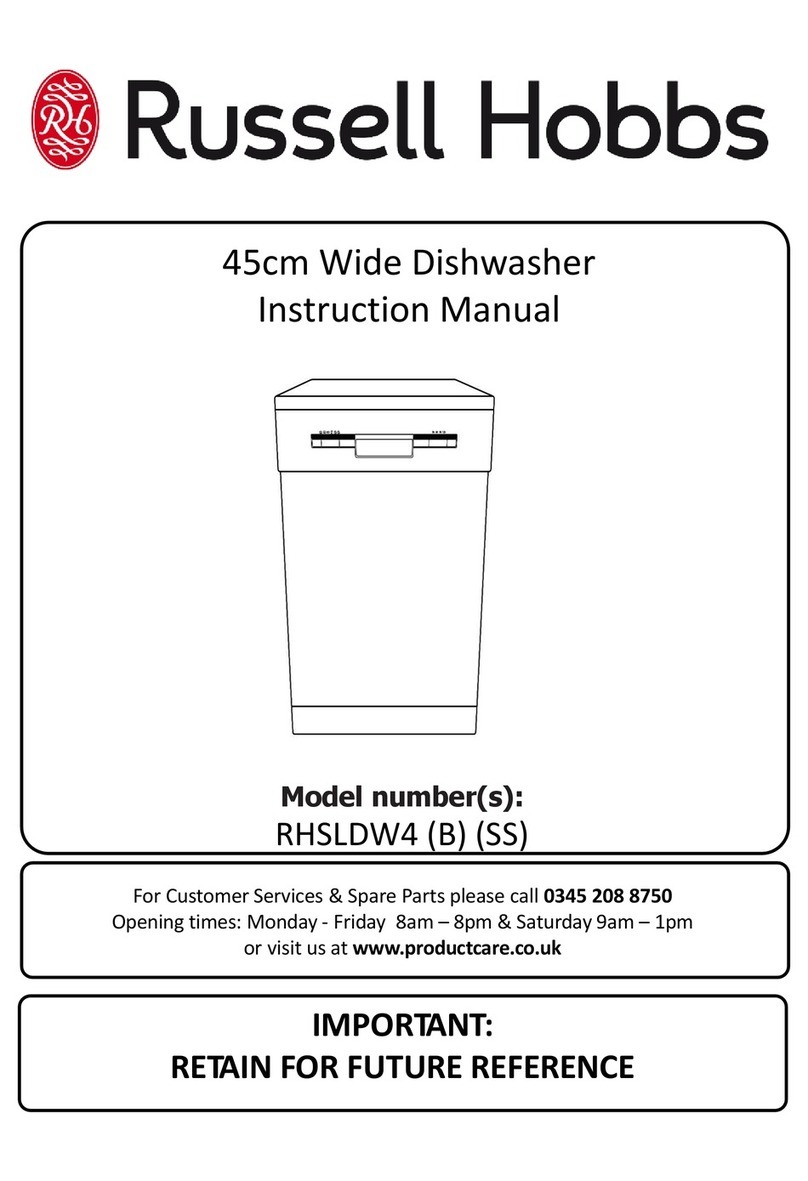Safety instructions
4
Do not allow the control panel to become wet. Clean
with a soft, damp cloth. Do not use detergents, abrasives
or spray-on cleaners on the control panel.
Keep children away from detergent and rinse aid, keep
children away from the open door of the dishwasher, there
could still be some detergent left inside.
Dishwasher detergents are strongly alkaline, they can be
extremely dangerous if swallowed. Avoid contact with skin
and eyes and keep children away from the dishwasher
when the door is open.
Children should be supervised t o ensure that they do not
play with the appliance. The door should not be left open,
since this could increase the risk of tripping.
If the supply cord is damaged, it must be replaced by the
manufacturer or its service agent or a similarly qualified
person in order to avoid a hazard.
Do not use detergents not designed for an automatic
dishwasher. Never use soap, laundry detergent, or hand
washing detergent in your dishwasher. Keep these products
out of the reach of children.
You should clean the outside of the dishwasher with a
damp cloth. Don’t allow water to seep into any openings.
